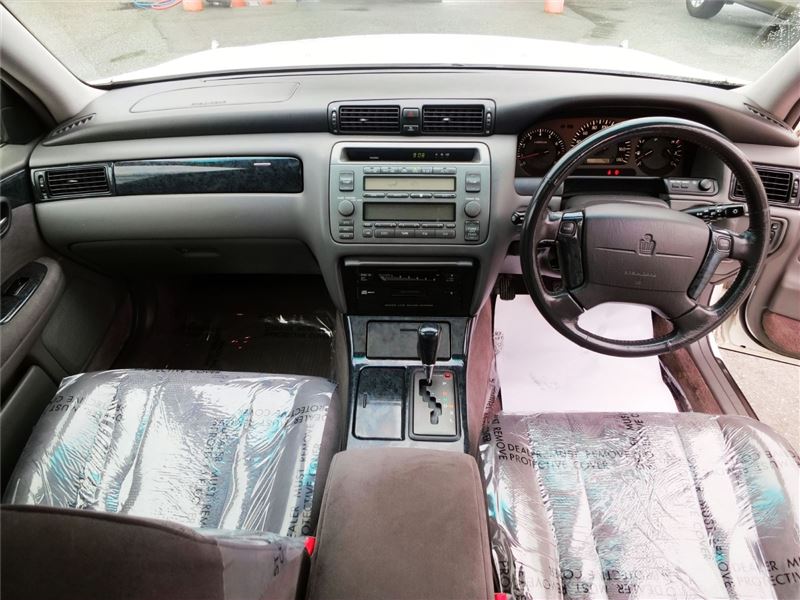It has a turbocharged inline six-cylinder engine. It has rear wheel drive. It wears Toyota's longest-lived and one of its most prestigious nameplates. And it's a station wagon. It's our autoTRADER.ca Find of the Week this week, a 2001 Toyota Crown Estate Athlete V.
The Toyota Crown is Toyota's Japanese market luxury sedan. The nameplate was introduced in 1955, and is still in use today. That makes it the longest nameplate of any Toyota, and one of the longest for any automaker. The first four generations of Crown were actually sold in North America, from 1958 to 1973, before eventually being replaced by the Cressida.
This week's find is an 11th generation Crown, the S170 model. It shares a platform with the Lexus GS, which is sold in Japan as the Toyota Aristo. Toyota makes two different versions of the Crown. The first is the more luxurious Crown Royal. That car gets bodywork and interior trim oriented more to the finer side.
The one for drivers was the Crown Athlete. It came with sportier trim, including a blacked-out grille. There was a subtle body kit, adding fog light and side sills. The Athlete got dual-element headlights in place of the single headlights of the Royal. Inside, the Athlete had grey trim instead of the natural woodgrain of the Royal.
The Athlete V got an uprated suspension for better handling and had four-wheel steering to help it get turned around on crowded streets. The rear-steering also helps improve stability on the highway.
But underneath is where the real changes were made. The Athlete was the performance version, so it got different engines. The Athlete V got one of the best. It had Toyota's 1JZ-GTE. That engine was a 2.5L turbocharged inline-six. It's the same engine that was available in the third-generation Supra. But by 2001, it had seen some revisions from Supra-duty spec.
It had a new cylinder head and variable valve timing. The twin-turbo setup was dropped in favour of a single turbo that Toyota said had faster spooling at lower RPM. Compression jumped from 8.5 to 9.0:1. The power figure stayed the same, at 276 hp, but torque jumped 15 lb-ft to 280 lb-ft. Remember that this was a time when Japanese manufacturers refused to claim more than 276 hp. The 2.5L turbocharged engine is likely making north of 300, if you believe the online whispers.
Connected to a four-speed automatic with manual shift mode, and driving the rear wheels, this is a station wagon that can hit 100 km/h from a standstill in under 6.0 seconds. Since the engine is shared with the Supra, modifications are plentiful, with much more power available if you want it.
And if you look at it, you'd never guess. That's one of the best features of this car. In plain white, with small wheels, it looks like just another boring car. Sure it's not a car that was sold in North America, but it looks like an average early 2000s car.
Even the most die-hard car fan would have a hard time looking at this wagon and seeing a car that has around 300 hp. And that's what makes it great. If you want to make this 2001 Toyota Crown Athlete V yours, it's for sale now in Vancouver, BC.






















